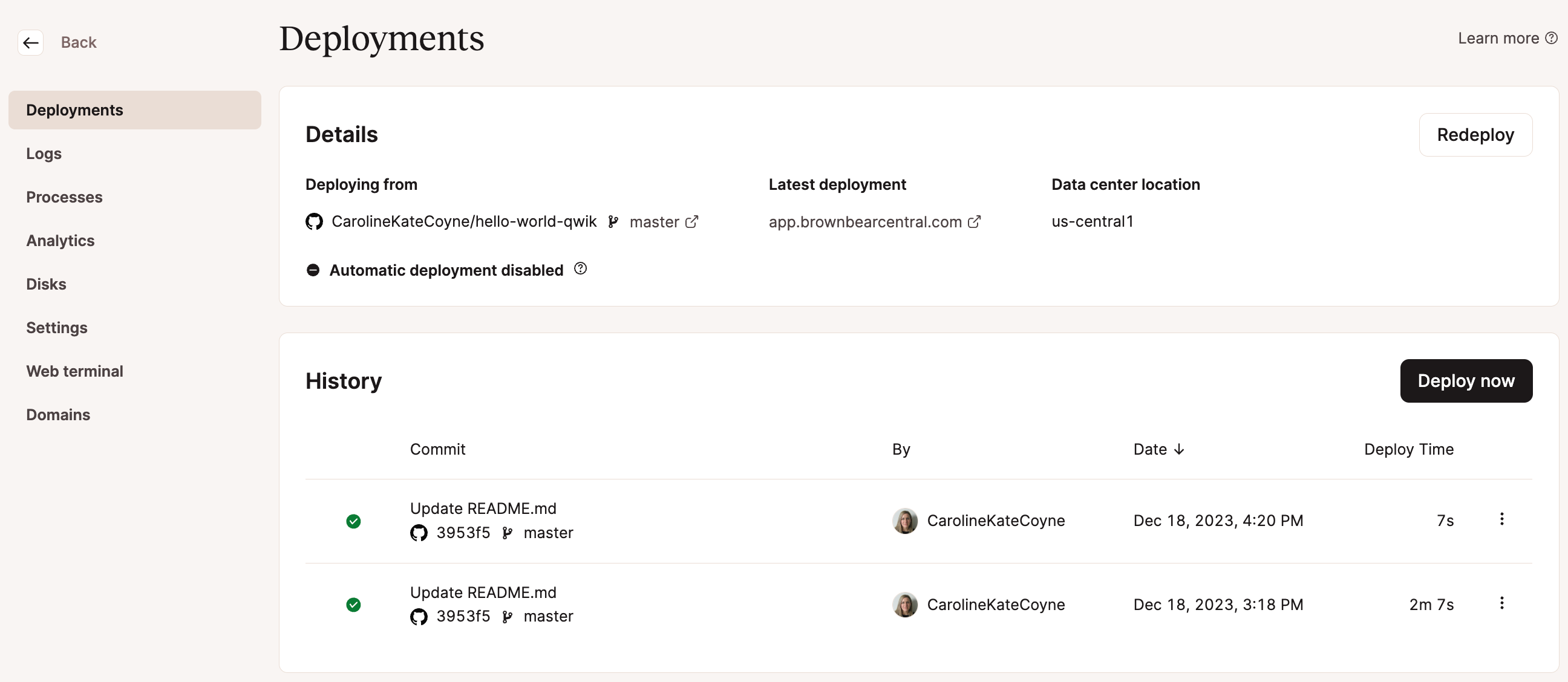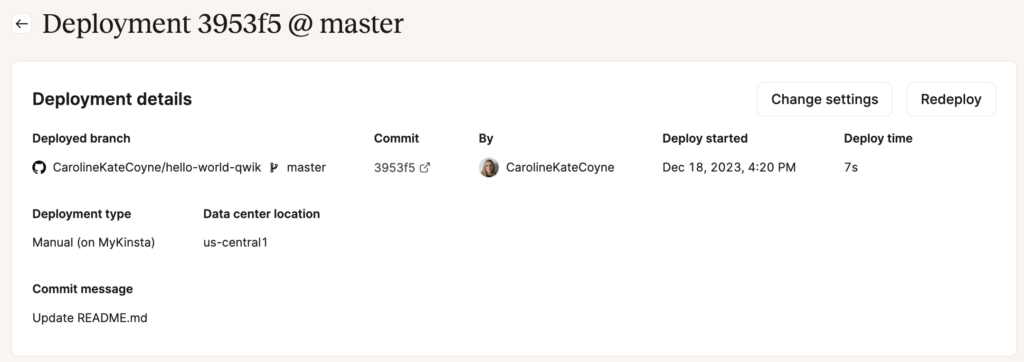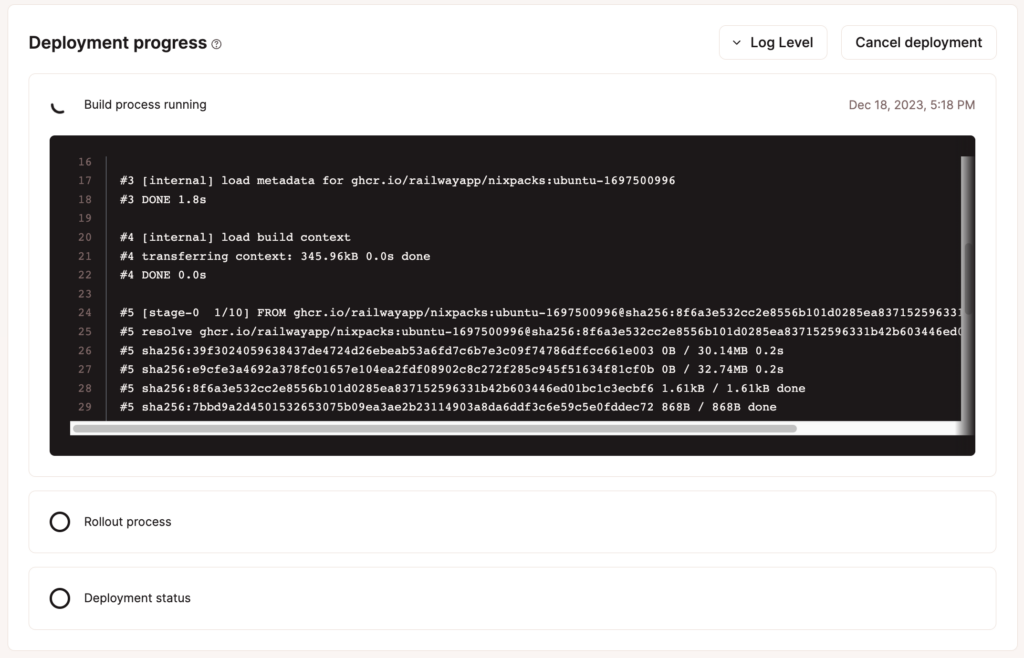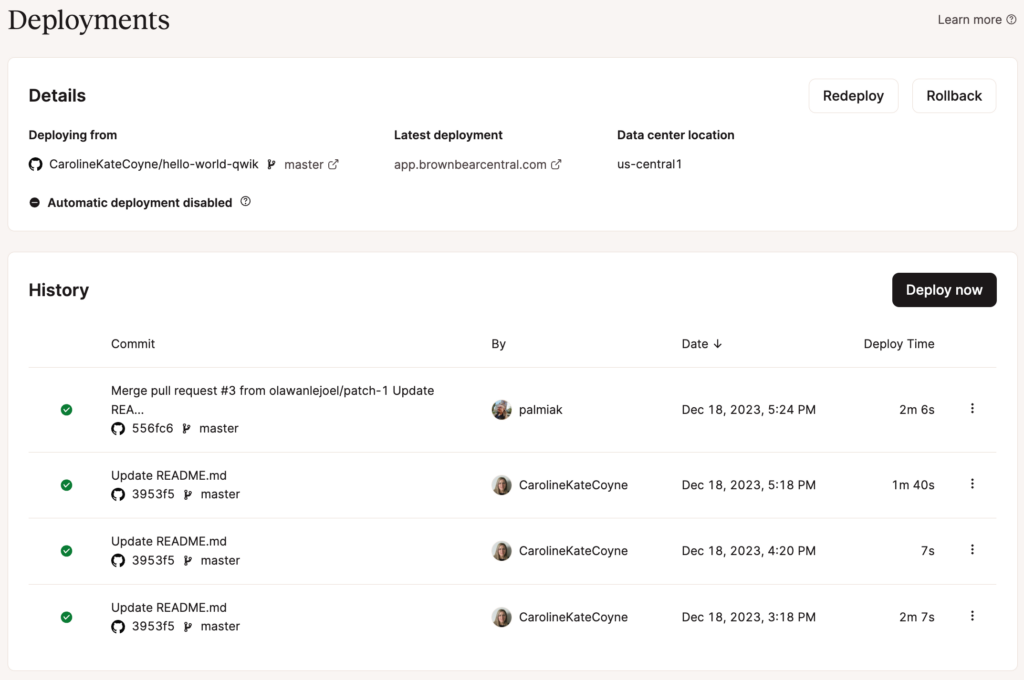Deployments
The Deployments page shows your application’s deployment details and history.

Details
In this section, you can see where the application is deploying from, including the branch, a link to the latest deployment, and if automatic deployments are enabled or not. If automatic deployment is enabled, the application deploys every time a commit is made to the branch in the Git repository. You can enable or disable automatic deployments in the application’s Settings.
To deploy the most recent commit again, click Redeploy.
To roll back to the most recent successful deployment, click Rollback.
History
In this section, you can see a list of all the previous deployments. You can also manually deploy the application by clicking Deploy now.
To deploy a previous commit again, click the kebab (three-dot) menu for that commit and click Redeploy.
When a deployment is in progress, the Deploy now button is replaced with a Cancel deployment button. If you cancel a deployment, depending on which step the deployment is in, either the build or the rollout of the deployment is canceled.
Individual Deployment Details
If you click on any of the previous deployments, you’ll be brought to a dedicated page that shows the Deployment details and Deployment progress for that specific deployment.
Deployment Details

This shows information such as:
- The name of the Git repository and branch.
- The Commit ID, with a link to the commit at the Git service provider.
- Who initiated the deployment.
- The deployment start date and time.
- The time it takes for the deployment to finish (Deploy time).
- The commit message.
If you want to change the resource settings to increase or decrease the CPU and RAM for the build process, click Change settings. This takes you to the Processes page and opens the Update build modal/pop-up, which allows you to make those changes.
To redeploy the application from this commit, click Redeploy.
Deployment Progress
If either the build or rollout process is taking too long or you’ve made a change and want to stop the deployment, you can click the Cancel deployment button. Log Level allows you to change the severity of the logs that appear in the Build process.

- The Build process shows the status of the build. You can also click the Build process to expand it and see the build log.
- Running: The build process is still running.
- Completed: The build process has finished and is successful.
- Failed: The build process has failed. In this case, check the build log to identify where the process may have failed.
- The Rollout process shows the status of the rollout.
- Deployment status shows the status of the deployment. When the deployment is complete, it shows a link to the application’s domain and a link to view the runtime logs.
Cancel a Deployment
There may be times when you need to cancel a deployment of your application. You may want to change the code, or perhaps the deployment is taking longer than expected, and you want to investigate your application’s code.
To cancel a deployment, on the Deployments page or in the Deployment details, click Cancel deployment.
When the confirmation modal/pop-up appears, click Cancel deployment to confirm the cancellation.
Depending on which deployment step the application is in, this either cancels the build or the rollout. If the build completes successfully before you cancel the deployment, a successful build process with a failed rollout will be shown in the deployment details.
If needed, you can roll back to the most recent successful deployment or redeploy a previous deployment.
Roll Back a Deployment
If you encounter any unexpected bugs or issues in the latest version of your application, the Rollback feature can help minimize downtime. With this feature, you can quickly roll back to the most recent successful deployment.
The Rollback feature uses the existing build image from your most recent successful deployment to redeploy your application, essentially skipping the build step. This helps get your application back up and running quickly.
Rollback does not change any of the following:
- Build processes
- Buildpacks
- Build resources
- Environment variables
- Build or Dockerfile path
To roll back a deployment, go to Deployments > Details and click Rollback.

In the confirmation modal that appears, click Rollback again.
If you want to deploy an older version of your application, you’ll need to Redeploy that specific deployment.
